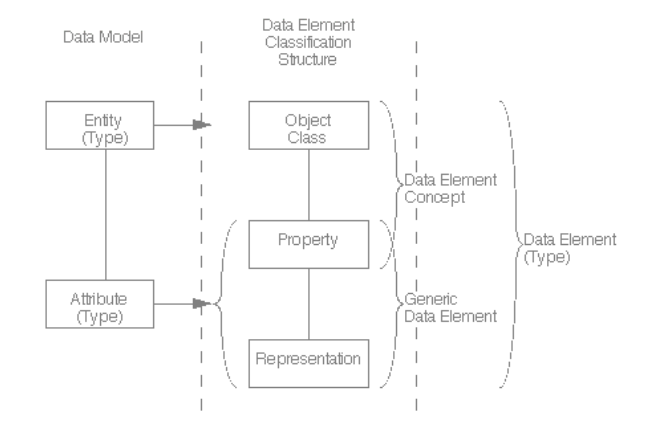GSIM (Generic Statistical Information Model)¶
GSIM provides a standardized set of information objects that flow through the process model in the creation of official statistics as represented by the Generic Statistical Business Process Model (GSBPM). GSBPM has been of interest to DDI since in conception. The DDI Generic Longitudinal Business Process Model (GLBPM) is modeled on the GSBPM which itself was informed by the DDI Lifecycle Model. DDI has worked with the UNECE in the development of GSIM to ensure that these two standards are compatible. In general, GSIM is a conceptual model whereas DDI is an implementation model. There is a shared interest in ensuring that DDI-L can be used as a means of implementing the GSIM conceptual model.
Mapping work and the development of DDI profiles to support GSIM are taking place within that community. A primary area for close mapping to the GSIM structure lies in that areas that relate to their reflection of the ISO/IEC 11179 Data Element Classification Structure. The terminology for the objects as well as the documentation for the objects reflects the GSIM model.
This standard describes the structure and content of a data element as the basic building block of information. DDI -L is particularly concerned with providing the information needed to populate an ISO/IEC 11179 data element and support a registry structure. The following diagram provides the Data Element Structure.
Figure 1. ISO11179 Data Element Structure

International Standard ISO/IEC 11179-1: Information technology – Specification and standardization of data elements – Part 1: Framework for the specification and standardization of data elements Technologies de l’informatin – Spécifiction et normalization des elements de données – Partie 1: Cadre pout la specification et la normalization des elements de données. First edition 1999-12-01 (p26) https://www.oasis-open.org/committees/download.php/6233/c002349_ISO_IEC_11179-1_1999%28E%29.pdf
In DDI terminology, the Object Class is defined by the universe, its Property is the concept, and the Representation is the Representation content used by the Variable that measures it.
ConceptualComponent contains Universe and Concept definitions while Representation is described within the Variable. In most DDI instances it is the Variable that ties the three sections of this definition together. Note that if the Variable does not include a concept reference the instance is not compliant with ISO/IEC 11179.
DDI 3.2 has added the ability to create the more abstract (or reusable) descriptions of an ISO/IEC 11179 Data Element and Data Element Concept. These have been structured to align with the GSIM description (see GSIM in this section). The 3.1 element DataElementConcept has been replaced by a ConceptualVariable located within ConceptualComponent. This object links a Concept with a Universe creating the equivalent of the ISO/IEC 11179 Data Element Concept. A RepresentedVariable located in Logical Product, adds the expression of the representation to the concept and universe. This is the reusable set of information for a Variable which is the implementation of a RepresentedVariable within a specific usage. The underlying RepresentedVariable may be referenced from the Variable